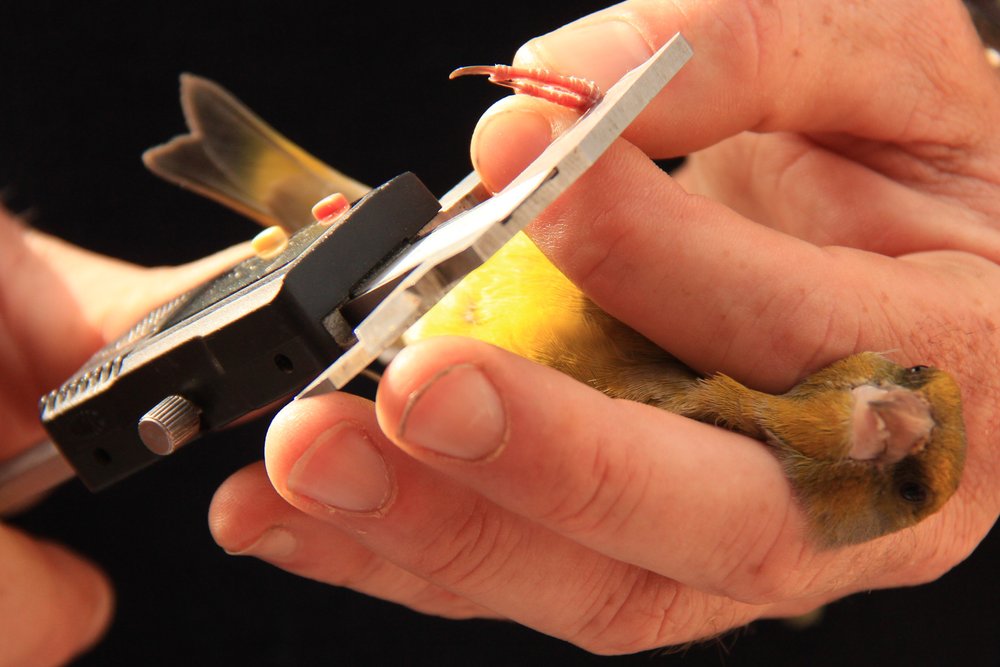
How do we know we lost at least 30% of French bird populations ? Well, we put rings on them.

In Europe, including in France, ecologists, ornithologists, bird lovers trained, all trained and approved banders, get together, catch some birds, ring and collect information on them. We catch birds and, if they are not already ringed, we ring them during specific periods. For instance, we ring a lot of birds wintering in a given area (like tits, greenfinches, robins...). Then a lot of species migrate to reproduce in a northern area and we try not to bother them during this key period.
The ring is made of metal and has an unique code on it. The code can be a series of number, sometimes with letters, depending on the species. We put the ring on the tarsus, so that it do not bother the bird. The same model of ring is used everywhere in France, and many international institutions work together.
Then all these information are gathered by national and international institutions. In France, we tell everything about the birds we captured to the CRBPO. So they know if the ringed birds are captured again, we can then know where they moved, how well they are doing (like if their weight changed)... and if they are found dead, we can study the cause and the populations dynamics. Then a bird ringed in France can be found again somewhere in Africa for example. How cool is that ?
It's a collaborative work between all ringers around the world.
So have a look at the birds in your city, for they might be ringed !

How do we catch and ring the birds ?
We install big nets, that birds do not notice, in a place known to be a feeding area (or where we a put bird table with seeds). We leave these nests for an entire morning and check on them regularly. If a bird is caught, we gently remove it from the net, put it in a tissue bag (so that it do not stress too much) while we collect the others.

Once each bird in the dim light of their cloth bag, we start measuring and ringing them. The most important parts are the wing and the tarsus, so that we can see if there are any trends at population trends (if all birds are getting smaller and smaller, there might a problem!), but it is also current to measure the beak, the skull and the tail.
One needs to be careful when manipulating the bird, not to harm it, and there are specific ways of handling them.
You can see it in the different pictures: always pinching the bird's head and paws between the fingers.

Then, the bird's plumage is a previous help. We can estimate if the bird is a juvenile, born from the year or older (we can tell whether it had moulted). For some species, we also use the color patches to tell the sex.


The elegant goldfinch above is a male, you can tell because of the red above the eye, it goes beyond it (and some of the black feathers on the top of the wings -the small coverts- are brown in females).
Finally, we ring, check if it has any fat, and weight the bird. Once the ring with an unique code is put on the bird's paw, you can see on the gif and the picture how we tighten it, and how we weight the bird in a cup.


Then, bye bye, and hope to see you again !

Congratulations @ch0mper! You have completed the following achievement on the Steem blockchain and have been rewarded with new badge(s) :
Click here to view your Board
If you no longer want to receive notifications, reply to this comment with the word
STOPTo support your work, I also upvoted your post!
Vote for @Steemitboard as a witness and get one more award and increased upvotes!
Downvoting a post can decrease pending rewards and make it less visible. Common reasons:
Submit